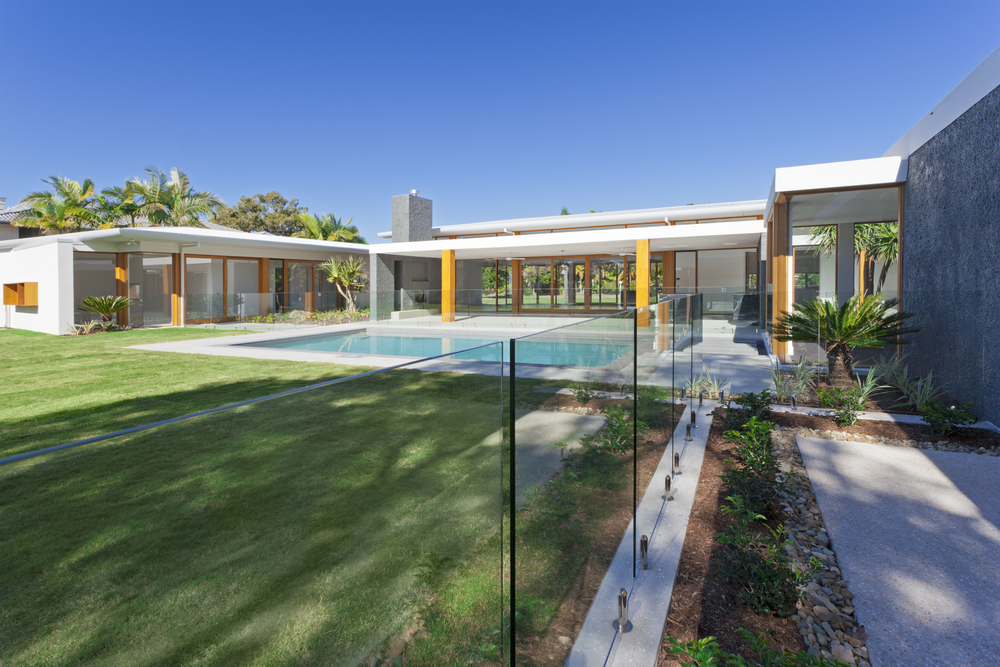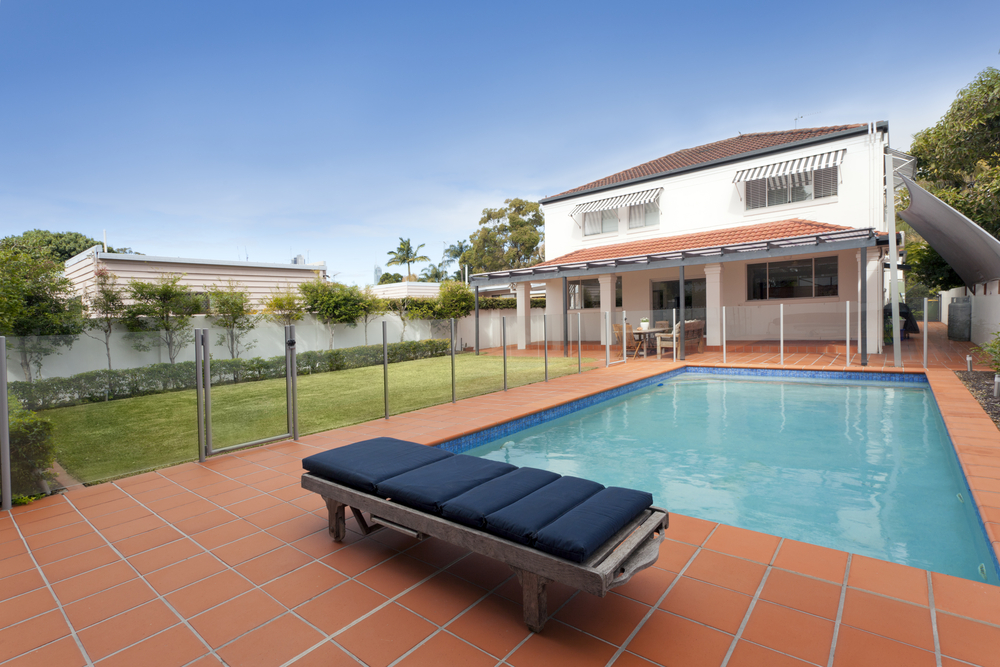Pool Fencing: Modern Designs, Materials and Safety for Families
August 15, 2025

Products
balustrading
.webp)

locks and latches
.webp)

security and privacy
.webp)

A well-designed pool fence is more than just a legal requirement. It is an investment in safety, style, and peace of mind. In recent years, pool fencing Sydney homeowners choose has evolved far beyond the standard tubular designs of the past. Modern options now combine cutting-edge materials, sleek aesthetics, and smart safety features to create fences that not only protect but also enhance the overall look of an outdoor space. For families, the right fence can provide both an unobstructed view of the pool and the assurance that children and pets are kept safe.
As design trends shift and building regulations update, staying informed about your options is key. From frameless glass that seamlessly blends with contemporary landscapes to aluminium and composite materials that offer durability with minimal maintenance, today’s pool fencing market is brimming with possibilities. This guide explores the latest designs, materials, and compliance essentials, as well as innovative safety features that can make your pool area both beautiful and secure for years to come.

Pool fencing has shifted from a purely functional safety measure to a major design feature in modern outdoor spaces. Today’s options give homeowners the flexibility to match their fence to the style of their home and garden while still meeting strict safety standards. Whether your taste leans toward sleek minimalism or a more customised look, there is a growing range of designs that blend form and function seamlessly.
Frameless glass pool fencing remains one of the most sought-after styles for homeowners who want an unobstructed view of the pool and garden. Made from thick, toughened safety glass panels, these fences use discreet stainless-steel spigots or channels to hold the glass in place, eliminating the need for bulky posts. This creates a clean, seamless look that works particularly well with contemporary architecture and landscaped gardens.
Beyond aesthetics, frameless glass fencing offers practical benefits. Its transparency makes it easier to keep an eye on children and pets from different vantage points, and the smooth glass surface is resistant to weathering, meaning it will not rust, warp, or require repainting. Regular cleaning with a glass-safe solution is all that is needed to maintain its clarity. Homeowners in coastal areas, such as Sydney’s eastern suburbs, often appreciate glass fencing for its resilience against salt air corrosion compared to some metal options.
For those looking for something unique, custom-designed pool fences offer the ability to match the materials, colours, and shapes to your property’s aesthetic. Powder-coated aluminium can be tailored to almost any colour, allowing the fence to blend into garden plantings or contrast against decking for a bold statement. Decorative panels with laser-cut patterns can be incorporated for added style while still meeting visibility and climb-resistant requirements.
Timber and composite materials are also gaining popularity in custom pool fencing designs. While timber brings warmth and a natural feel, it does require regular maintenance to protect it from moisture and UV damage. Composite materials, on the other hand, can mimic the look of wood without the upkeep, making them a practical choice for busy households. Combining materials, for example aluminium frames with glass infills, can create a bespoke look that balances durability, safety, and style.
In New South Wales, pool fencing is governed by strict regulations designed to reduce the risk of drowning, particularly for young children. Homeowners must ensure their pool fence meets these requirements before the pool can be legally used. Failure to comply can result in fines and, more importantly, safety risks. While the rules have been in place for many years, 2025 brings updates that pool owners need to be aware of, making it essential to review your fence design and installation plans before committing.
As of 2025, NSW pool fencing regulations require that all pools, including above-ground and portable pools deeper than 30 cm, have a compliant barrier at least 1.2 metres high. The gap between the bottom of the fence and the ground must not exceed 10 cm, and vertical bars must be spaced no more than 10 cm apart to prevent children from squeezing through.
Gates must be self-closing and self-latching, opening outwards away from the pool area. The latch must be positioned at least 1.5 metres above ground level or otherwise designed to be child-resistant. Climbable objects such as furniture, planters, or trees must be kept at least 90 cm away from the fence. For pools attached to a boundary fence, additional requirements may apply, such as installing a non-climbable zone to prevent neighbouring children from accessing the pool.
From 2025 onwards, all pool owners must ensure their fence is registered on the NSW Swimming Pool Register and, in many cases, have it inspected and certified before a property can be sold or leased. These measures aim to ensure ongoing compliance, not just at the time of installation.
Despite clear regulations, non-compliance is common, often due to simple oversights during installation. One frequent mistake is failing to account for landscaping changes that create climbable zones. For example, installing a new garden bed or placing decorative pots too close to the fence can unintentionally breach safety rules. Similarly, wear and tear over time, such as a gate latch that no longer closes automatically, can render a previously compliant fence unsafe.
Another pitfall is choosing materials or designs that look appealing but do not meet structural standards. Some decorative panels or low-grade timber can warp or weaken in the weather, creating gaps that compromise safety. Even glass fences, while durable, must be installed to specific standards, including the correct thickness of toughened glass and secure anchoring.
Professional installation is highly recommended to ensure compliance from the start. Experienced installers are familiar with the nuances of the legislation and can spot potential problems that a DIY approach might miss. They can also ensure the fence is positioned correctly relative to the pool and any surrounding structures, reducing the risk of future compliance issues.

The choice of material for your pool fence impacts more than just appearance. It determines how well the fence will withstand weather, how much maintenance it will require, and how long it will last. In Sydney’s climate, where summer sun, heavy rain, and in coastal areas, salt-laden air are all factors, durability should be considered alongside aesthetics. The good news is that modern pool fencing materials offer plenty of options to suit different styles, budgets, and maintenance preferences.
Glass remains a favourite for homeowners seeking a sleek, modern look with uninterrupted views. Both frameless and semi-frameless styles are available, with toughened safety glass panels offering exceptional strength. Glass is highly resistant to corrosion, making it ideal for coastal properties, and its smooth surface makes cleaning straightforward. However, it does show water spots and fingerprints, so regular cleaning is needed to maintain its clarity.
Aluminium is another top choice, valued for its durability, versatility, and low maintenance. Powder-coated aluminium is available in a range of colours, allowing it to blend with or stand out from surrounding landscaping. It will not rust, is lightweight, and is easy to clean, making it a practical option for busy households.
Composite materials are gaining popularity for their ability to mimic the look of timber without the same maintenance demands. They resist warping, splintering, and rot, and they are available in natural-looking finishes that can suit a variety of outdoor settings. Composites are especially appealing for those who want the warmth of timber tones without the need for staining or sealing.
When selecting a material, it is important to consider both the visual impact and the upkeep required. A beautiful fence that needs constant attention might not be practical for families who want a low-maintenance pool area. For example, while natural timber brings a warm, organic feel, it requires ongoing sealing or staining to protect against UV damage and moisture, especially around chlorinated or saltwater pools.
Glass offers the advantage of timeless style and minimal structural maintenance, but some homeowners find frequent cleaning tedious. Aluminium, on the other hand, offers the best of both worlds, with stylish finishes and virtually no upkeep beyond occasional washing. Composite materials fall somewhere in between, offering a natural look with minimal care.
Ultimately, the right choice often comes down to balancing lifestyle, budget, and personal style preferences. Working with a reputable pool fencing supplier can help you compare material samples in person, see how they look in different lighting, and better understand the long-term maintenance requirements before making a decision.
Modern pool fences are designed to be more than just physical barriers. Today’s systems often integrate smart features that enhance safety and convenience, giving families extra peace of mind. While meeting NSW regulations is mandatory, going beyond the basics can create a safer, more user-friendly pool area that fits into a modern lifestyle.
Self-closing and self-latching gates are standard requirements, but there are now advanced options that improve usability and security. Magnetic latch systems provide a smooth, reliable close every time and are less prone to wear over the years. Some models include keyed locks or digital keypad access, which can be useful for families who want more control over who can enter the pool area.
Alarms are another growing trend. Pool gate alarms can sound when a gate is opened unexpectedly, while water immersion alarms can alert homeowners if movement is detected in the pool. These extra layers of protection are especially valuable for families with young children or those who have regular visitors.
Beyond meeting the legal requirements, many homeowners add features specifically aimed at child and pet safety. For children, installing a fence that offers no footholds and minimal gaps is crucial. Glass and vertical-bar designs help prevent climbing, while strategic landscaping can reduce temptation by keeping the area around the fence clear.
For pets, particularly small dogs, mesh infill panels can be added to prevent them from squeezing through vertical bars. Some pool owners also install secondary barriers, such as temporary playpen-style fences, for added safety during busy gatherings.
Technology is also playing a role. Smart home systems can integrate pool safety sensors that send alerts to your phone if the fence gate is left open or if unusual movement is detected in the water. While these features are not a substitute for supervision, they add another layer of reassurance for busy families.
Choosing the right pool fence is about more than ticking off a legal requirement. It is a decision that affects the safety, functionality, and visual appeal of your entire outdoor area. By understanding the latest design trends, knowing your material options, and staying informed about NSW compliance requirements, you can create a pool enclosure that meets both your lifestyle and safety needs. Whether you prefer the transparency of frameless glass, the practicality of aluminium, or the natural look of composite finishes, there are solutions to suit every home and budget.
Adding extra safety features such as secure gate systems, alarms, and child or pet-friendly enhancements can provide further peace of mind. For pool fencing Sydney homeowners, investing in quality design, materials, and installation is an investment in the long-term enjoyment of your pool. With the right combination of style, durability, and safety, your pool fence can become a feature that protects your family while adding value and beauty to your property for years to come.